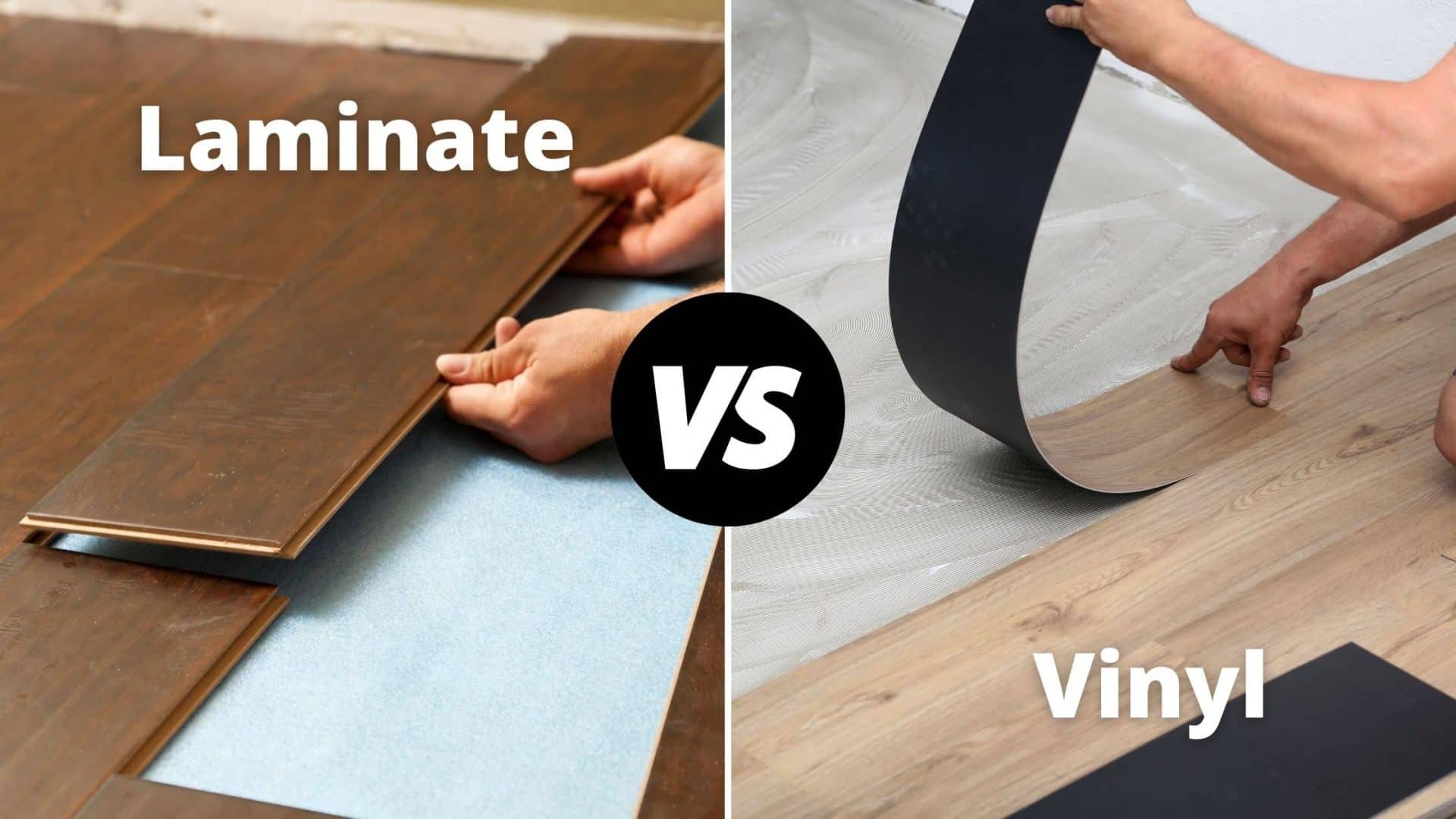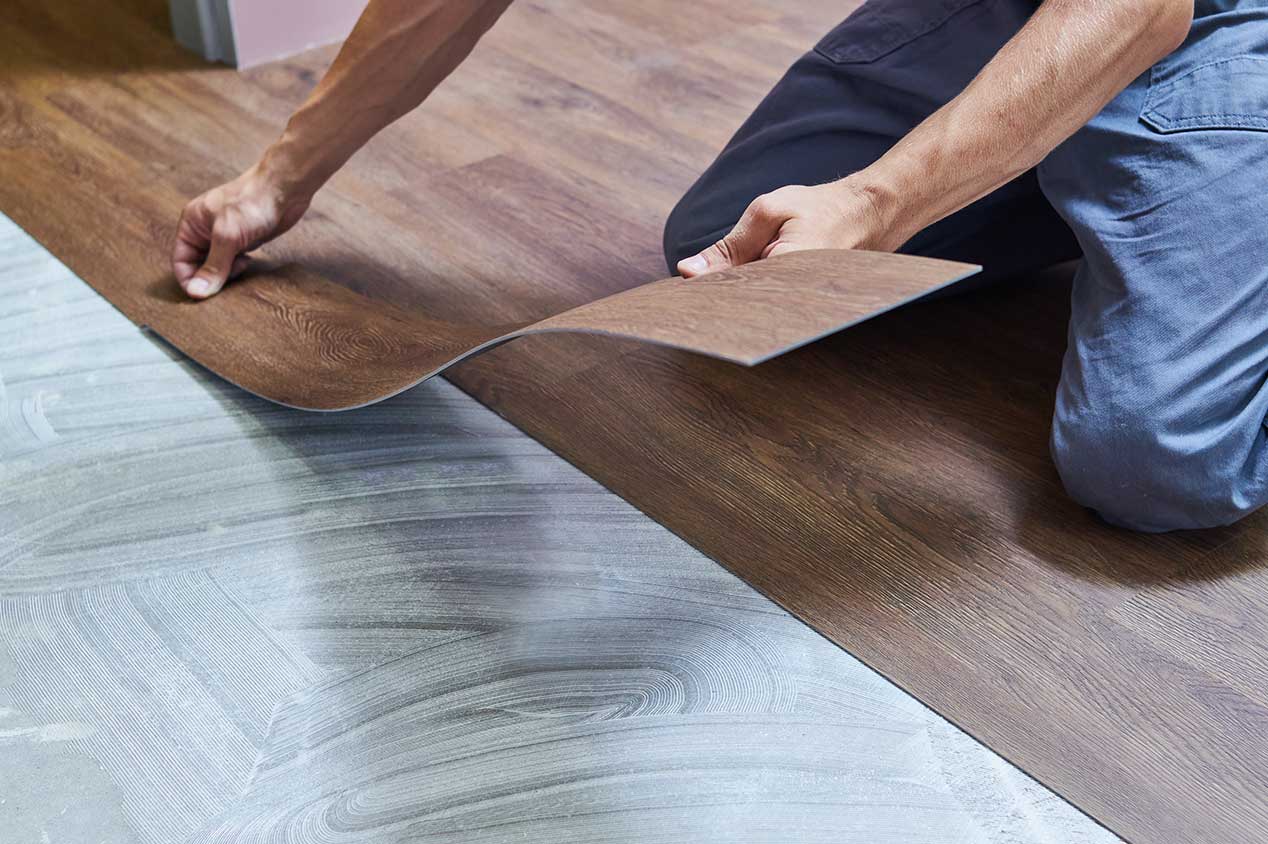Imagine walking into your dream home, a space filled with warmth and comfort. You’re drawn to the beautiful floors, their rich textures and seemingly endless patterns promising a touch of elegance and durability. But as you take a closer look, a question arises: are these floors laminate or vinyl? For the uninitiated, these materials can be remarkably similar, making it challenging to discern one from the other. But fear not, dear reader, because deciphering the intricacies of laminate and vinyl flooring is about to become as easy as taking a stroll through your newly decorated abode. Let’s delve into the world of these popular flooring options and equip you with the knowledge to make informed decisions for your home.

Image: donpedrobrooklyn.com
Choosing the right flooring for your home can feel like navigating a labyrinth of options. Laminate and vinyl flooring, with their affordability and versatility, are often the top contenders. They’ve become increasingly popular, mimicking the look of natural materials like hardwood, stone, and tile, but without the hefty price tags or demanding maintenance. However, understanding the nuances between these two flooring types can ensure you make the right choice for your needs and aesthetics.
Understanding the Basics
Laminate and vinyl flooring are both engineered materials designed to replicate the look and feel of more expensive flooring options. Both are known for their ability to withstand everyday wear and tear, but their construction and properties differ significantly.
Laminate Flooring
Laminate flooring is typically composed of multiple layers meticulously fused together. The core is a high-density fiberboard (HDF) that provides stability and durability, and on top of that lies a decorative layer that mimics the look of real wood, tile, or even stone. The top layer is a transparent wear layer that protects the decorative layer from scratches, stains, and fading.
Vinyl Flooring
Vinyl flooring, on the other hand, is constructed from synthetic materials like polyvinyl chloride (PVC), often with a core of fiberglass or felt for added strength. It can come in various forms, including sheet vinyl, tile vinyl, and luxury vinyl plank (LVP). Unlike laminate, vinyl flooring can be softer and more comfortable underfoot, and it often has a more realistic texture.

Image: mikimemo.com
Unveiling the Differences: A Head-to-Head Comparison
Now that we have a basic understanding of laminate and vinyl, let’s examine the key differences that can help you identify and choose the right flooring for your home.
Appearance
Both laminate and vinyl flooring boast a vast array of styles and patterns, making it possible to achieve any aesthetic. But when it comes to mimicking natural materials, vinyl takes the lead. Vinyl flooring can replicate the intricate grain patterns of wood, the delicate veining of marble, or the rustic appeal of slate with remarkable accuracy. Laminate flooring, while offering a wide range of options, often has a more uniform and less detailed appearance, making it slightly less convincing in terms of mimicking natural textures.
Durability
Both laminate and vinyl flooring are known for their durability. However, they fare differently when it comes to specific aspects of wear and tear.
Laminate is a champion when it comes to resisting scratches and dents, making it ideal for high-traffic areas. Its rigid core, combined with the protective wear layer, provides exceptional strength.
Vinyl, on the other hand, excels at water resistance. Its non-porous surface prevents moisture from seeping in, making it perfect for kitchens, bathrooms, and even basements. However, it can be susceptible to scratches and indentation from heavy furniture.
Installation
Laminate and vinyl flooring installations differ significantly:
Laminate flooring is often installed using a click-and-lock system, making it relatively easy for DIY enthusiasts. The boards simply snap together, forming a secure and seamless surface.
Vinyl flooring can be installed with adhesive, loose-lay, or click-and-lock systems depending on the type. While click-and-lock vinyl planks are becoming increasingly common, professional installation is often recommended for sheet and tile vinyl for optimal results.
Cost
Both laminate and vinyl flooring offer a cost-effective alternative to natural materials like hardwood and stone. However, the price range can vary dramatically depending on the quality, brand, and style.
Generally, laminate flooring is less expensive than vinyl flooring. This is especially true for basic laminate options. However, high-end laminate brands can cost as much or even more than certain vinyl flooring types.
Luxury vinyl plank (LVP), a higher-end category of vinyl flooring, can be quite pricey. This is due to its advanced construction, enhanced durability, and ability to replicate the look and feel of natural materials with remarkable detail.
Maintenance
Both laminate and vinyl floors are known for their low maintenance needs. A simple sweep or vacuuming is typically enough to keep them clean, and a damp mop can be used for deeper cleaning.
However, some important distinctions exist:
Laminate flooring requires special cleaning products designed to avoid scratching its protective wear layer. Harsh chemicals and abrasive cleaners can damage the surface.
Vinyl flooring, on the other hand, is more forgiving and can withstand more aggressive cleaning agents. Its smooth, non-porous surface is relatively easy to clean and maintain.
Expert Insights and Tips for Choosing the Right Flooring
To help you make an informed decision, we’ve sought insights from flooring experts. Here are some key takeaways:
Consider your lifestyle and household needs: If you have pets or young children, laminate flooring’s scratch resistance could be a significant advantage. If you live in a humid climate or have areas prone to water spills, vinyl flooring’s water resistance is invaluable.
Think about the look and feel you desire: Vinyl flooring’s ability to replicate natural textures with exceptional detail can be a deciding factor for those seeking a more authentic aesthetic. Laminate flooring, while offering a diverse selection of styles, may not quite capture the intricate details of natural materials.
Don’t be afraid to invest in quality: Both laminate and vinyl flooring come in a wide range of quality levels. Investing in a reputable brand with a strong warranty can ensure longer durability and peace of mind.
How To Tell The Difference Between Laminate And Vinyl Flooring
Final Thoughts
Ultimately, the best flooring choice for your home depends on your individual needs, preferences, and budget. By understanding the key differences between laminate and vinyl flooring, you can make an informed decision that complements your lifestyle and ensures a beautiful and durable floor for years to come. So, go forth, explore the vast world of flooring options, and choose wisely. Your home, and your feet, will thank you for it!






